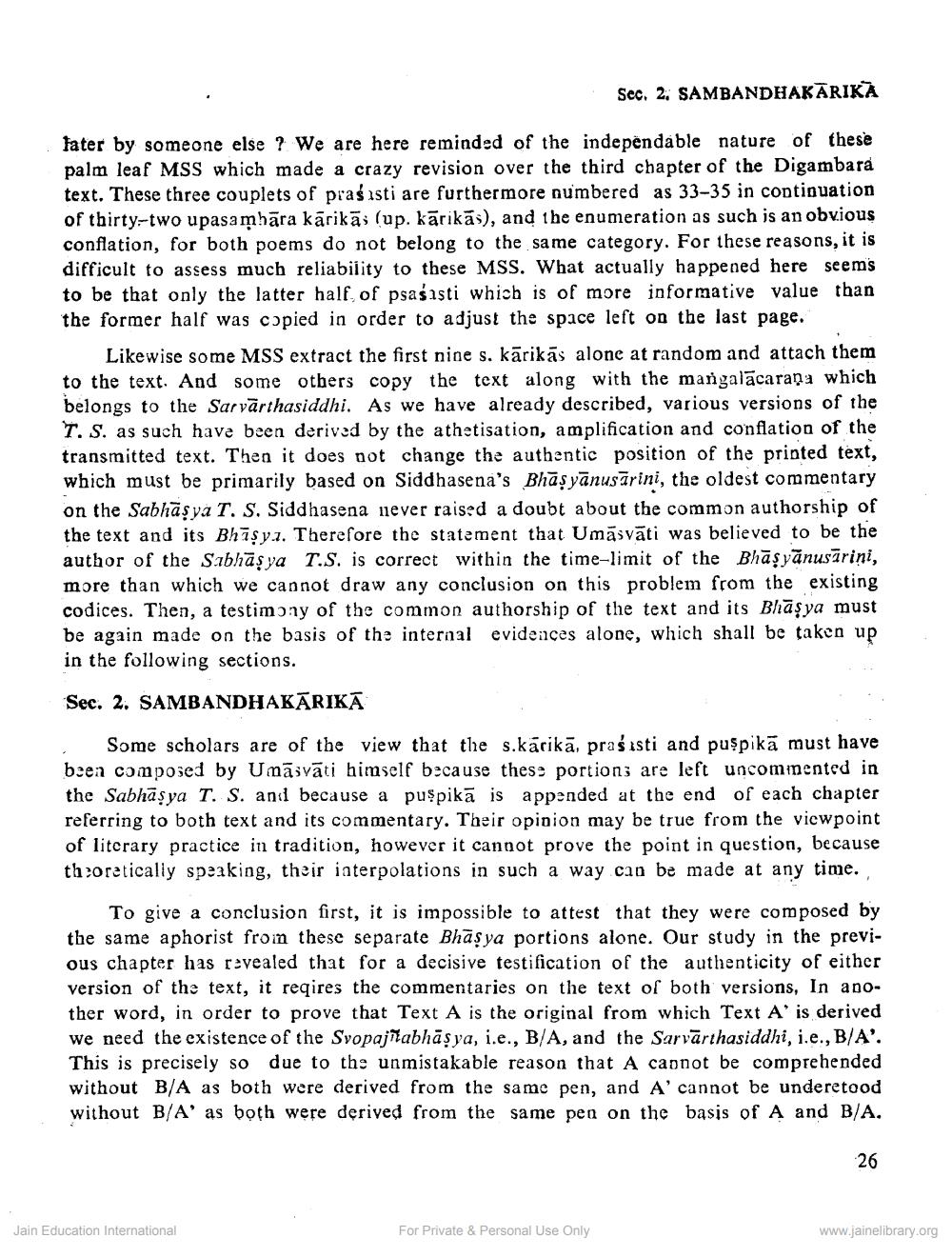________________
Sec. 2, SAMBANDHAKARIKA
later by someone else? We are here reminded of the independable nature of these palm leaf MSS which made a crazy revision over the third chapter of the Digambara text. These three couplets of prasisti are furthermore numbered as 33-35 in continuation of thirty-two upasamhāra kārikās (up. kārikās), and the enumeration as such is an obvious conflation, for both poems do not belong to the same category. For these reasons, it is difficult to assess much reliability to these MSS. What actually happened here seem's to be that only the latter half of psasasti which is of more informative value than the former half was copied in order to adjust the space left on the last page.
Likewise some MSS extract the first nine s. kārikās alone at random and attach them to the text. And some others copy the text along with the mangalācarana which belongs to the Sarvārthasiddhi. As we have already described, various versions of the T. S. as such have been derived by the athetisation, amplification and conflation of the transmitted text. Then it does not change the authentic position of the printed text, which must be primarily based on Siddhasena's Bhāş yānusarini, the oldest commentary on the Sabhāşya T. S. Siddhasena never raised a doubt about the common authorship of the text and its Bhīsy.1. Therefore the statement that Umāsvāti was believed to be the author of the Sabhāsya T.S. is correct within the time-limit of the Bhāsyānusarini, more than which we cannot draw any conclusion on this problem from the existing codices. Then, a testimony of the common authorship of the text and its Bhāşya must be again made on the basis of the internal evidences alone, which shall be taken up in the following sections. Sec. 2. SAMBANDHAKĀRIKĀ
Some scholars are of the view that the s.kācikā, prasasti and puspikā must have been composed by Unāvāti himself because these portions are left uncommented in the Sabhāsya T. S. and because a puspikā is appended at the end of each chapter referring to both text and its commentary. Their opinion may be true from the vicwpoint of literary practice in tradition, however it cannot prove the point in question, because theoretically speaking, their interpolations in such a way can be made at any time.
To give a conclusion first, it is impossible to attest that they were composed by the same aphorist froin these separate Bhasya portions alone. Our study in the previous chapter has revealed that for a decisive testification of the authenticity of either version of the text, it reqires the commentaries on the text of both versions, In another word, in order to prove that Text A is the original from which Text A' is derived we need the existence of the Svopajñabhāşya, i.e., B/A, and the Sarvārthasiddhi, i.e.,B/A'.
This is precisely so due to the unmistakable reason that A cannot be comprehended without B/A as both were derived from the same pen, and A' cannot be underetood without B/A' as both were derived from the same pen on the basis of A and B/A.
26
Jain Education International
For Private & Personal Use Only
www.jainelibrary.org




